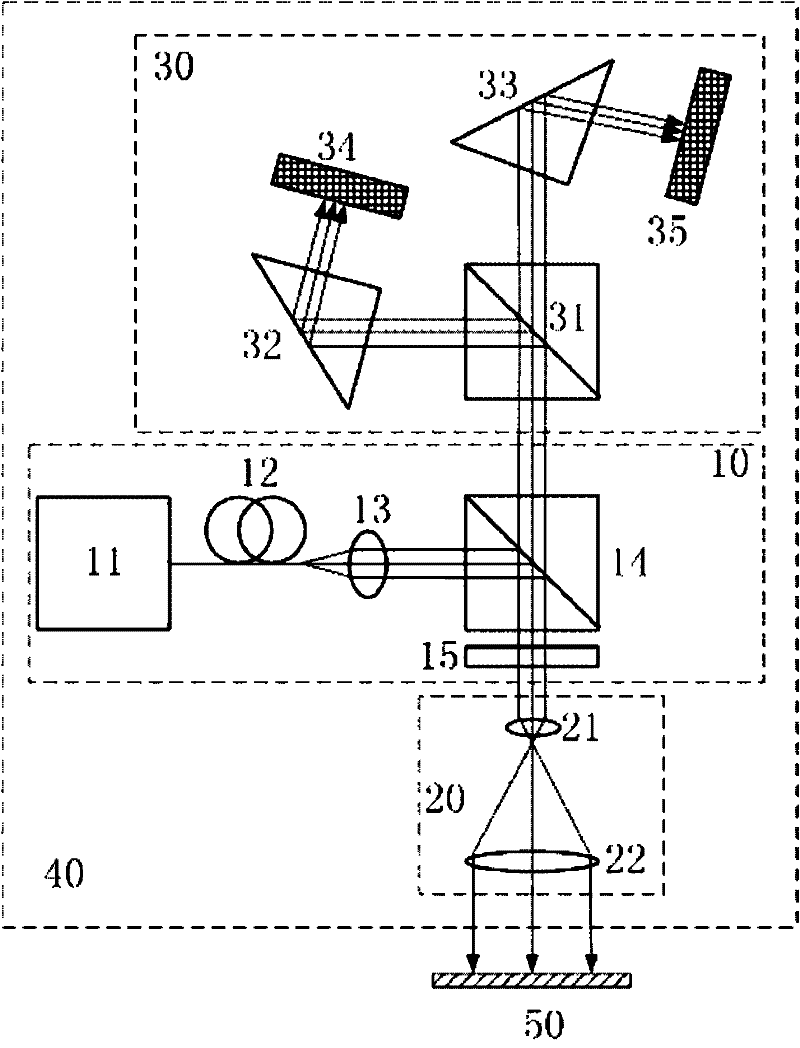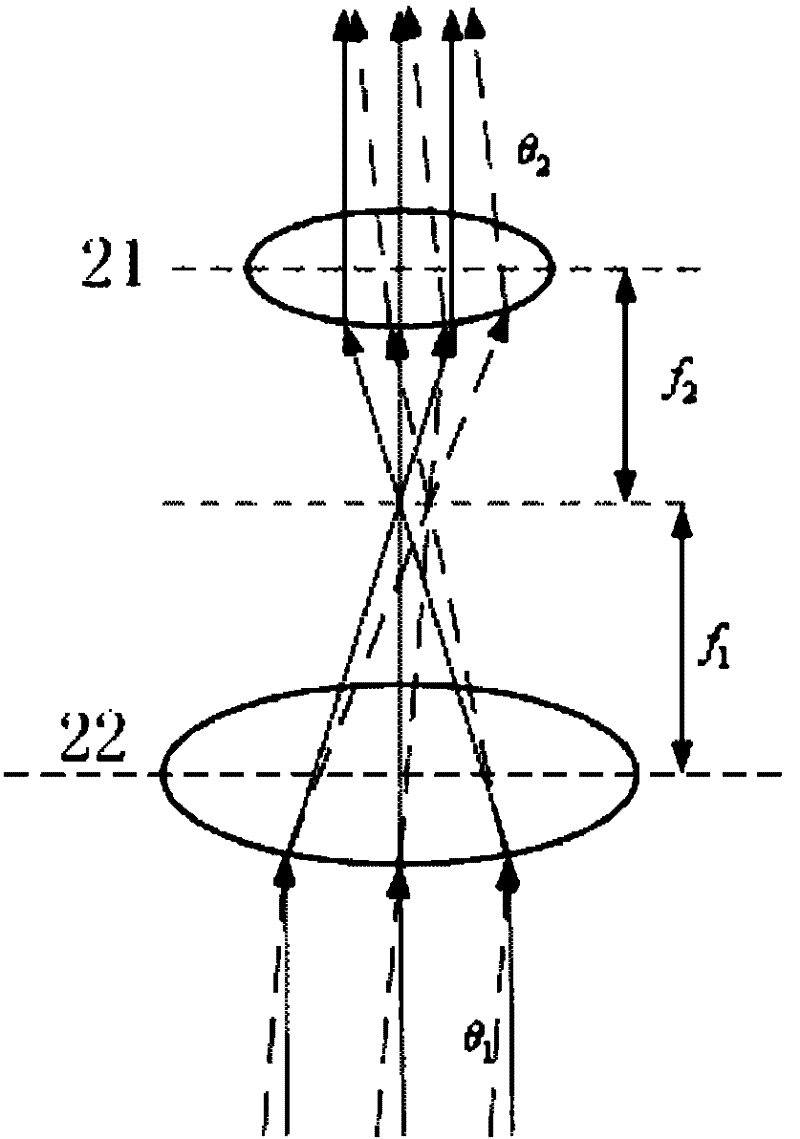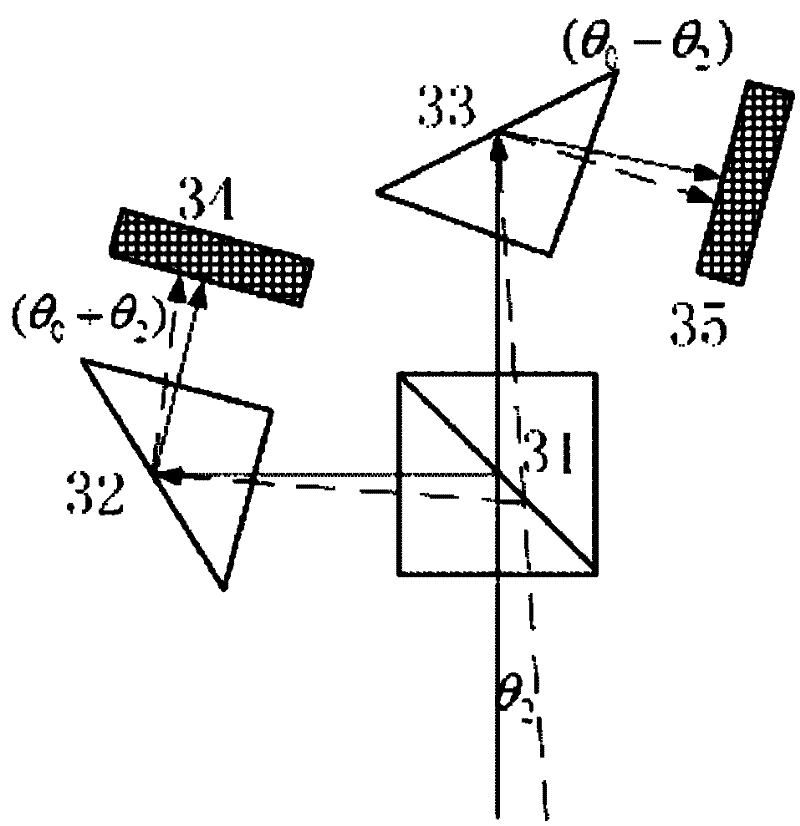Method and device for high-accuracy and small-angle measurement
A measurement method and small-angle technology, applied in the field of optical measurement, can solve problems such as the decrease of the measurement range, the difficulty of installing and adjusting the sensing system, and the difficulty of overcoming the influence of the measurement accuracy of the measurement reference, etc., and achieve simple structure, large measurement range, and small volume Effect
- Summary
- Abstract
- Description
- Claims
- Application Information
AI Technical Summary
Problems solved by technology
Method used
Image
Examples
Embodiment 1
[0043] like figure 1 The shown device 40 for high-precision small-angle measurement includes: a laser emitting unit 10 , a beam expander lens unit 20 , a differential detection unit 30 , and a measuring target mirror unit 50 .
[0044] The laser emitting unit 10 includes: a laser 11 , a single-mode fiber 12 , a collimator lens 13 , a polarization beam splitter 14 and a λ / 4 wave plate 15 . Among them, the laser 11 generates the incident working beam, the single-mode fiber 12 filters its high-order mode, the collimating lens 13 collimates the working beam to obtain the reference beam, and the polarization beam splitter 14 performs polarization splitting on the reference beam to obtain the first line Polarized light (here, the reflected light, that is, the S polarized light is selected as the first linearly polarized light), and the λ / 4 wave plate 15 converts the first linearly polarized light into circularly polarized light. Laser 11, single-mode fiber 12, collimator lens 13 an...
Embodiment 2
[0070] like Figure 7 The second high-precision small-angle measurement device shown is the same as figure 1As shown, the difference is that the first linearly polarized light selects the transmitted light, that is, the P polarized light, and the P polarized light directly passes through the polarization beam splitter 14, and the optical path does not change. In this way, the laser 11, the single-mode fiber 12, the quasi-polarized light The straight lens 13, the polarizing beam splitter 14 and the λ / 4 wave plate 15 are all located on the optical path of the incident working beam, and the angle between the fast axis direction of the λ / 4 wave plate 15 and the polarization direction of the first linearly polarized light is 45°. Because the beam expander lens unit 20 is located on the optical path of the circularly polarized light obtained after the conversion of the λ / 4 wave plate 15, the measurement target mirror unit 50 is located on the outgoing optical path of the beam expand...
Embodiment 3
[0074] like Figure 8 The third high-precision small-angle measurement device is shown, and figure 1 It is similar to what is shown, and the difference is that a converging lens unit 60 is also included. The condensing lens unit 60 and the differential detection unit 30 are sequentially located on the optical path of the outgoing beam of the polarization beam splitter 14 , and the outgoing beam first passes through the condensing lens unit 60 and then enters the differential detection unit 30 .
[0075] The narrowing lens unit 60 is composed of a third convex lens 62 and a fourth convex lens 61 , and an appropriate focal length ratio (that is, reduction ratio) can be selected according to actual measurement needs.
[0076] In order to improve the stability of the working light beam and improve the resolution, in practical applications, the magnification of the beam expander lens unit 20 is usually required to be as large as possible. With the increase of the magnification of...
PUM
 Login to View More
Login to View More Abstract
Description
Claims
Application Information
 Login to View More
Login to View More - R&D
- Intellectual Property
- Life Sciences
- Materials
- Tech Scout
- Unparalleled Data Quality
- Higher Quality Content
- 60% Fewer Hallucinations
Browse by: Latest US Patents, China's latest patents, Technical Efficacy Thesaurus, Application Domain, Technology Topic, Popular Technical Reports.
© 2025 PatSnap. All rights reserved.Legal|Privacy policy|Modern Slavery Act Transparency Statement|Sitemap|About US| Contact US: help@patsnap.com



